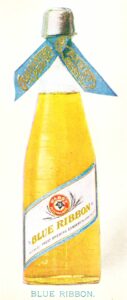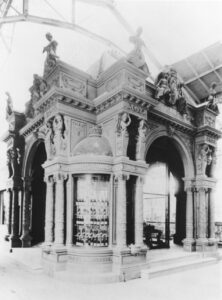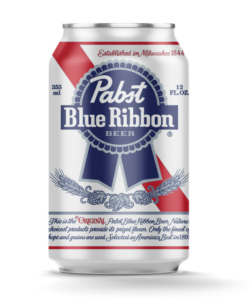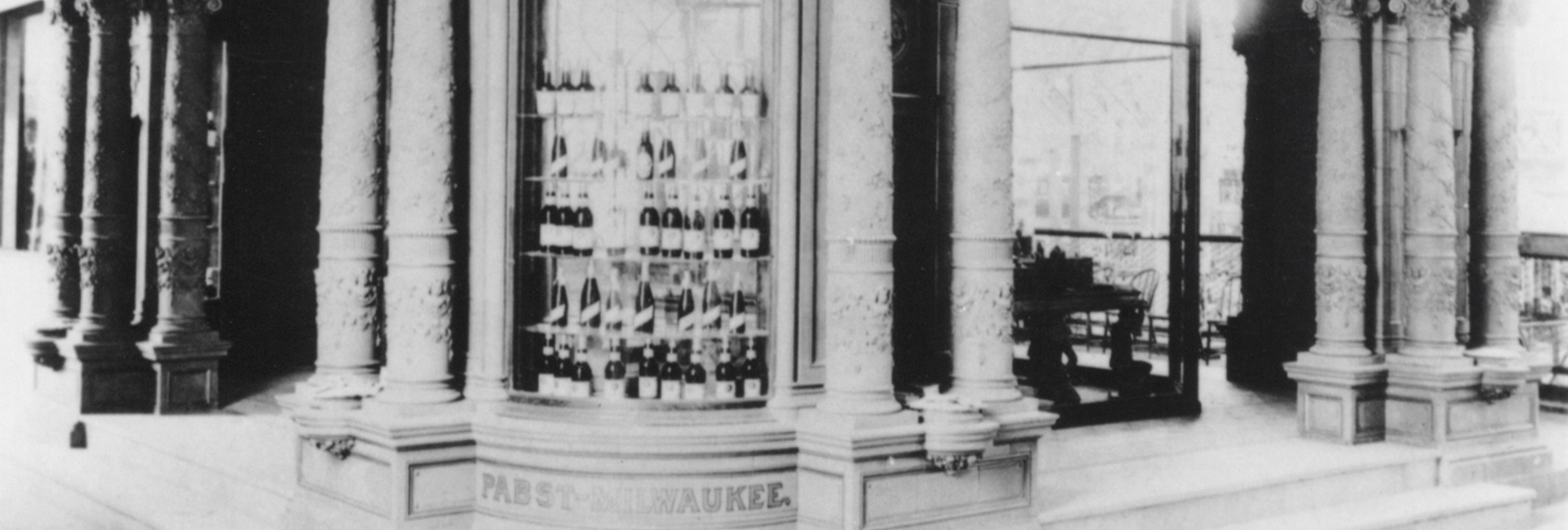“Selected as America’s Best in 1893” is written on every can of Pabst Blue Ribbon. This claim isn’t hyperbolic, either. The story of how this phrase came to decorate the iconic PBR can, as well as the namesake printed blue ribbon, is one of classic American capitalism and competition.
A drier than usual summer and city made of wood created the perfect conditions for the Chicago Fire to wreak havoc on the Windy City in 1871: In 1893, the city was ready to prove that it was back and better than before, hosting the World’s Columbian Exposition. The World’s Fair was a place for innovation of all kinds, including architecture, science, the arts, and of course the Midwest’s favorite beverage — Alcohol.
By 1893, Frederick Pabst had already established himself as one of the most successful brewers in the country. Pabst’s Best Select, as it was known at that time, was no stranger to fame, having already won multiple awards and accolades in Milwaukee and selling over 100,000 barrels of beer in 1872. But the Columbian Exposition was a chance for Pabst to really earn national attention, and he had a plan for how to do just that. For starters, actual blue silk ribbons were tied to every can of PBS beer (totaling 1 million feet of ribbon per year), and had been since 1882. This was a way for Pabst to make his beer stand out among other bottles, and the World’s Columbian Exposition was another way for PBS to rise through the ranks of American beer.

Rendering of Pabst Blue Ribbon with a light blue ribbon tied around the neck of the bottle.
But Pabst’s plan to make his company the prime American beer supplier wasn’t going to happen without some competition. Fellow Milwaukee brewer Joseph Schlitz was also in attendance at the fair, along with other men from across the country who were eager to put their beer in the limelight. Pabst and Schlitz both created grand pavilions within the Agricultural Building to showcase both their product and their extravagance. This particular building housed exhibits on farming and other classically American subjects, and the Agricultural Building was only one of fourteen neo-classical gigantic buildings created for the fair, each with a different theme. Furthermore, more than 65,000 exhibits and opportunities were presented to visitors at the fair, including the chance to ride the world’s first Ferris Wheel: Obviously both Schlitz and Pabst had some tough competition.

Pabst Pavilion at the 1892 Chicago World’s Fair on the second floor of the agricultural building.
Luckily, Pabst was able to rise to the occasion, with his grand pavilion garnering him much attention and PBS making it as one of final two nominees for America’s best beer. The other nominee, Budweiser, ended up winning. But that’s not the end of the story. Before the judges tasted the beers, there was some debate as to whether judges should know which beer they were drinking and what was in it before they drank them. It was decided that they would be allowed to know whose and what beer they were drinking, but after Budweiser was announced the winner, one judge claimed the beer had “chemical impurities.” This error was a clerical and miniscule one, simply a problem with measurements, but it caused The New York Times to call the entire system of awards at the fair “a disgrace to the supposed intelligence of the country.”
The singular judge who took issue with Budweiser’s chemical makeup decided to change his vote to PBS, but not everyone accepted that. Because of the confusion of what exactly was wrong with Budweiser, some simply remained content with thinking of Budweiser as the real winner, while others heard that Pabst was the official and final winner. A newspaper article from the Deadwood Pioneer attempts to clear this confusion up: Titled “Pabst Milwaukee Beer Wins,” the short statement declares that the announcement of Pabst as the winner “was made officially for the first time on Wednesday, Nov. 15, 1893… Hence all previous statements from every source have been unauthorized and misleading.”

Contemporary PBR can with the 1893 World’s Fair story.
As previously mentioned, despite the win at the World’s Columbian Exposition, the blue ribbon of silk existed long before then. When bottles of beer started to turn into cans, it made more economic sense to have the image of a blue ribbon on the can than to keep tying them, so that’s what the company did. So where does the “Selected as America’s Best in 1893” come from? In the 1950s, the line was added in order to drum up sales. So that’s where the phrase comes from, in all its controversial glory, and although there was never really a physical blue ribbon for Pabst, he took initiative and created his own.
Although the event happened over a century ago, today visitors can catch a small glimpse into the Gilded Age’s Columbian Exposition right here in Milwaukee, at the Pabst Mansion. The aforementioned pavilion Pabst commissioned to be built for the Exposition was dismantled after the fair’s end and brought back to Pabst’s home on Wisconsin Avenue. Now it serves as the entrance to the house museum and gift shop of the Pabst Mansion, and can be seen by any who wish to admire the beautifully historic domed building.
By Nora McCaughey

